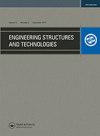Corrosion impact analysis on residual life of structure using cathodic technique and algor simulation software
引用次数: 17
Abstract
Damage to the reinforced concrete structure is mainly occurring because of two reasons either due to end of service life or due to load exceeds beyond structural capacity. Along with these two reasons degradation of material property is the one more major factor which causes the risk of failure. A concrete structure constructed in an aqueous environment get exposed to the corrosion process. Consequently, this causes the generation of crack, fragilization, a decrease of bond strength between reinforcement and concrete. All these factors affection static and dynamic behavior of concrete structure reducing the service life of an affected area. Whereas service life carries the major role in the economy of a concrete structure that is why various methods have been developed in the second half of the 20th century to find out the residual life of the structure. In this proposed work, a non-destructive technique is used to predict the residual life of reinforced concrete beams having different cracking levels, as results of steel reinforcement corrosion, considering the variation produced in the dynamic behavior, through the variation of the first natural vibration frequency. Whereas to accelerate the corrosion process, impress current technique is used in which a current is externally applied to induce corrosion in reinforcement and then crack widths and vibration natural frequencies were measured. A numerical model is proposed with the help of FEM based Auto desk Algor simulation software to predict attack penetration depth. At the end, the paper is concluded by giving an effect of “water to cement ratio” and “cover to diameter ratio” on the initiation and propagation of corrosion and residual life of corroded beam specimen is graphically represented.利用阴极技术和algor仿真软件分析腐蚀对结构剩余寿命的影响
钢筋混凝土结构的破坏主要有两种原因,一种是使用寿命结束,另一种是荷载超出结构承受能力。除了这两个原因外,材料性能的退化是导致失效风险的另一个主要因素。在含水环境中建造的混凝土结构会受到腐蚀。因此,这导致裂缝的产生,脆性,钢筋与混凝土之间的粘结强度下降。所有这些因素都会影响混凝土结构的静动力性能,降低受影响区域的使用寿命。然而使用寿命在混凝土结构的经济中起着重要作用,这就是为什么在20世纪下半叶开发了各种方法来找出结构的剩余寿命。在这项工作中,一种非破坏性的技术被用于预测钢筋混凝土梁的剩余寿命有不同的裂缝水平,由于钢筋腐蚀,考虑到变化产生的动力行为,通过变化的第一固有振动频率。而为了加速腐蚀过程,采用了外加电流诱导腐蚀钢筋,然后测量裂纹宽度和振动固有频率的方法。利用基于有限元法的Auto desk Algor仿真软件建立了预测攻击渗透深度的数值模型。最后给出了“水灰比”和“包径比”对腐蚀萌生和扩展的影响,并用图形表示了腐蚀梁试件的剩余寿命。
本文章由计算机程序翻译,如有差异,请以英文原文为准。
求助全文
约1分钟内获得全文
求助全文

 求助内容:
求助内容: 应助结果提醒方式:
应助结果提醒方式:


